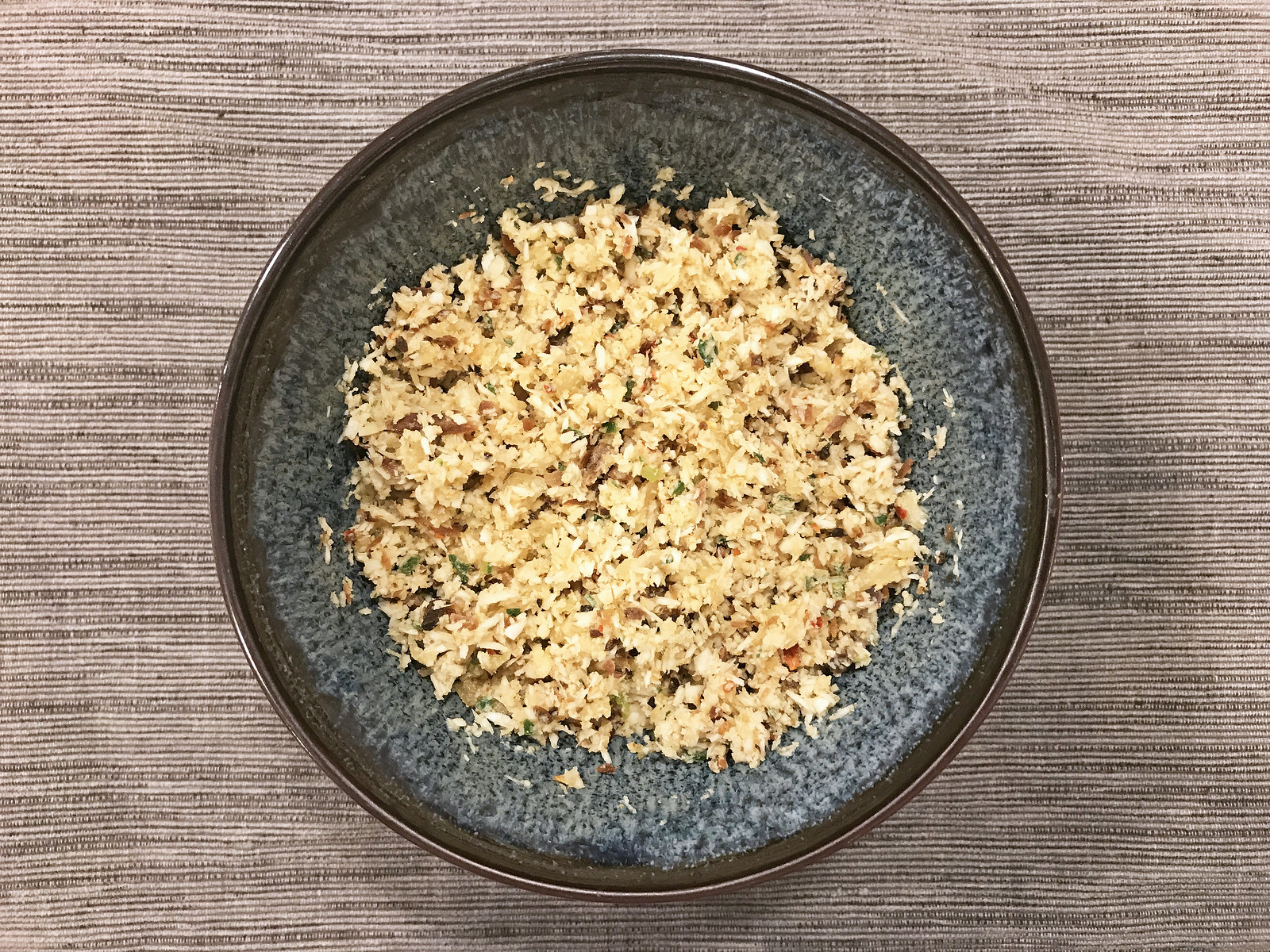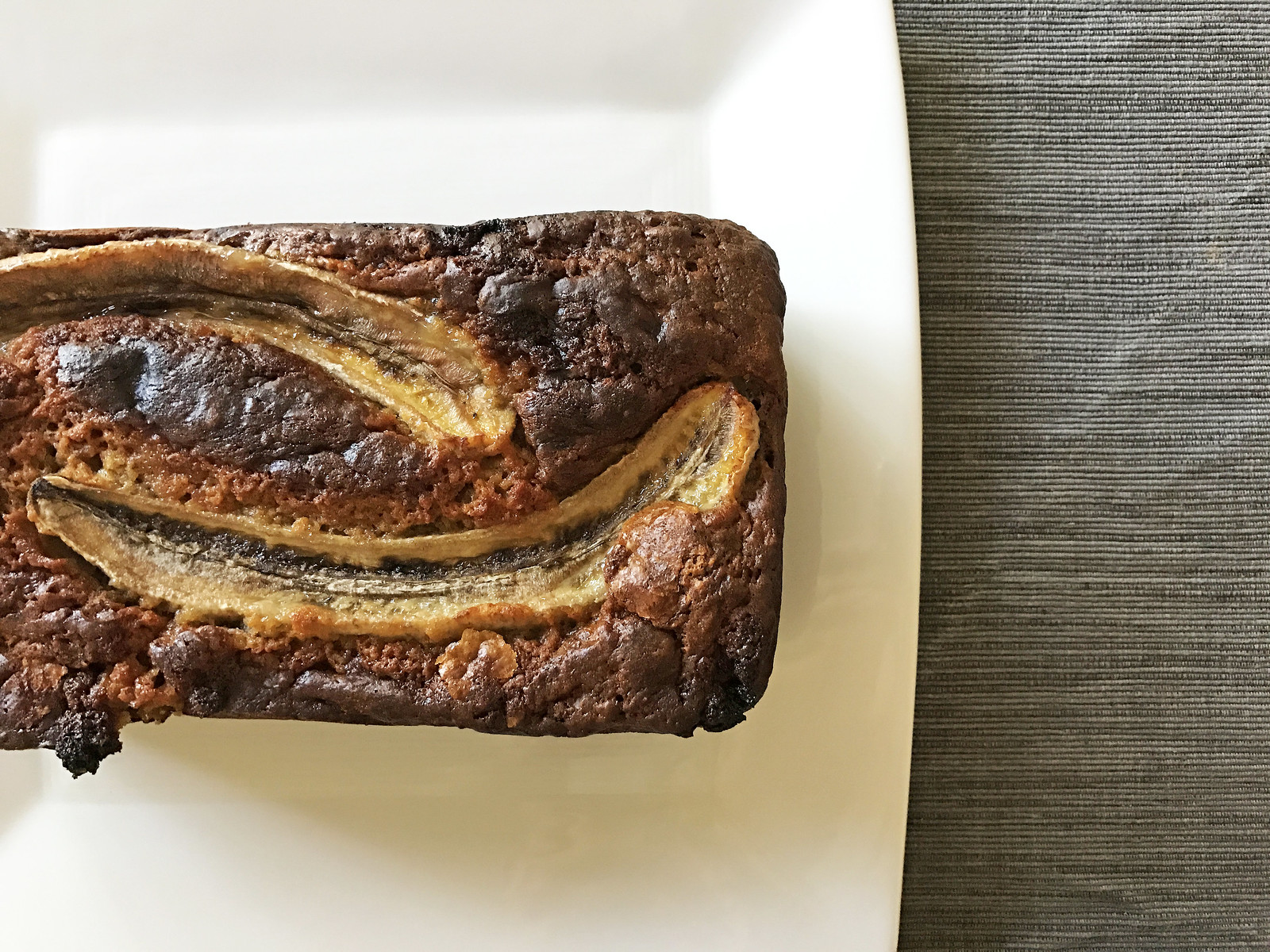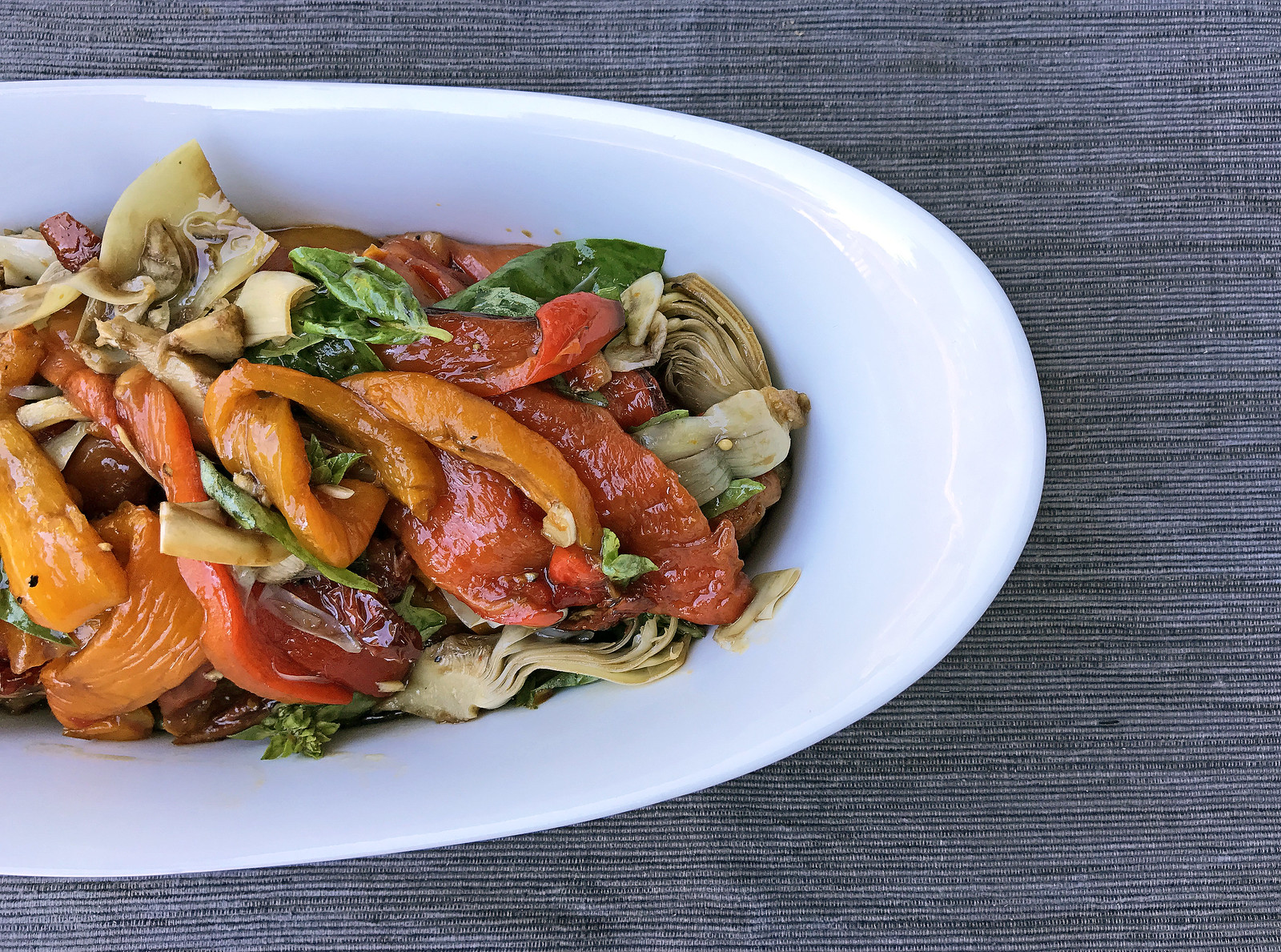Few Sri Lankan meals are complete without pol sambol, the ubiquitous condiment that accompanies rice and curry. Spicy, citrusy, and salty, this coconut sambol brings a cooling element to otherwise fiery food. There are countless variations on pol sambol, but this one is my favorite.
I prefer pol sambol with rice and curry, but it’s also standard alongside roti or buttered bread. And uh, please forgive the poor quality photo. Sometimes you just can’t wait to dig into the pol sambol. ¯\_(ツ)_/¯

Ingredients:
1/2 cup chopped onion
2 serrano chiles, seeded
1 clove garlic
1/2 teaspoon cayenne pepper powder
1 sprig curry leaves
2 teaspoons Maldive fish
1 teaspoon salt
1 teaspoon black pepper
1 cup shredded coconut (fresh or previously frozen, not dried)
Juice of 1/2 lime
1. Place onion, serrano chile, garlic, cayenne pepper, curry leaves, and Maldive fish in a food processor and blend. Add the salt, pepper, and coconut and blend until mixture is bound.
2. Remove from food processor and put in a bowl, mix in lime juice, and let sit in the fridge for at least an hour, covered, for flavors to blend, before serving.




